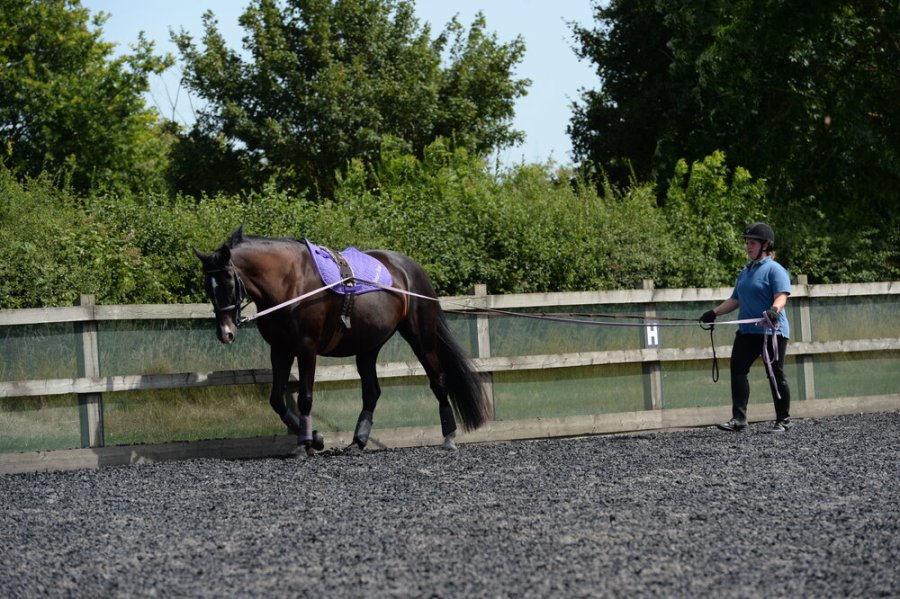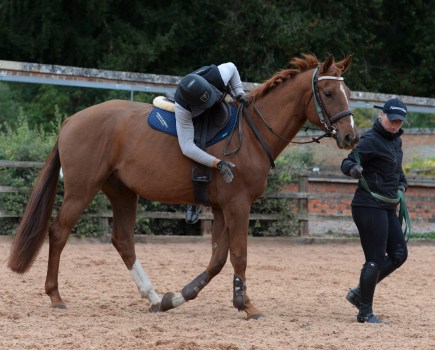Long-reining is a great way to exercise your horse, but it can seem confusing if you’ve never tried it before, or are perhaps introducing your horse to it. Mary Frances from Moorcroft Equine Rehabilitation Centre shares what you need to know to get started, from the equipment you’ll want to use to tips for communicating.
At Moorcroft, we long-rein horses with the aim of softening and suppling the back muscles and lifting the thoracic spine. This gives each horse a good chance of becoming strong enough to work under a rider, progress and stay sounder.
Working any horse above the bit (that is, with their back down and their head up) will, over time, cause physical issues, so long-reining is a vital tool, promoting the development of a good, strong, sound back for whatever riding discipline you do. The following guidelines will ensure that you get it right from the start.
Getting kitted out
It’s best to long-rein your horse in their normal tack – although reins aren’t need unless you intend to ride afterwards. How you attach the lines will ensure that you are in control and can communicate clearly with your horse.
Attach a line to each side of the bit rings like normal reins and thread them through your stirrups. When you’re positioned behind your horse on the end of the lines this creates a corridor for them to stay in. The lines along their sides also help you to guide them and keep them straight, just as your legs do when you’re riding.
Using this method also helps a sensitive horse get used to the feel of stirrup irons or the rider’s leg touching their sides, which is very useful when starting young horses.
Introducing the lines
Ask a friend to help with the lines, and to hold your horse in case they’re not sure what’s happening – a treat can be very useful here. Your friend can lead your horse using the line attached to the left side while you control from behind.
Take your time. Most horses will be fine and your friend will be able to step away, leaving you in control and able to start applying the aids successfully.
Hold the long-reins just as you would normal reins. Practise rolling up the lines in even loops in each hand.
Where to long rein
It’s best to start in the school or an enclosed area, and have a friend to help. Give you and your horse time to get used to this new method of training in a safe environment first – this will ensure that neither you nor your horse loses confidence. You can achieve a great deal in a short space of time. Your horse will benefit hugely and you’ll notice the change when you ride them.
You can then progress to long-reining around quiet lanes and bridleways if you wish.
Perfecting communication
To help you improve your technique, it’s useful to think of long-reining like this:
- The lines on the bridle are your hands and are used exactly as if you were riding your horse.
- The lines along your horse’s sides are your legs and are used in the same way – sometimes better!
- There should be an even contact on your horse’s mouth. A gentle bend to one side can indicate to them that you want them to turn that way.
- If your horse gets anxious and tries to run off, use your voice to calm them. Turning them onto a circle – just as you would when riding – will also help.
Meet the expert: Mary Frances BHSII and BHS SM has over 40 years’ experience in the equine sector. She joined Moorcroft Equine Rehabilitation Centre in 2006, developing the centre into a specialist equine rehabilitation facility.









